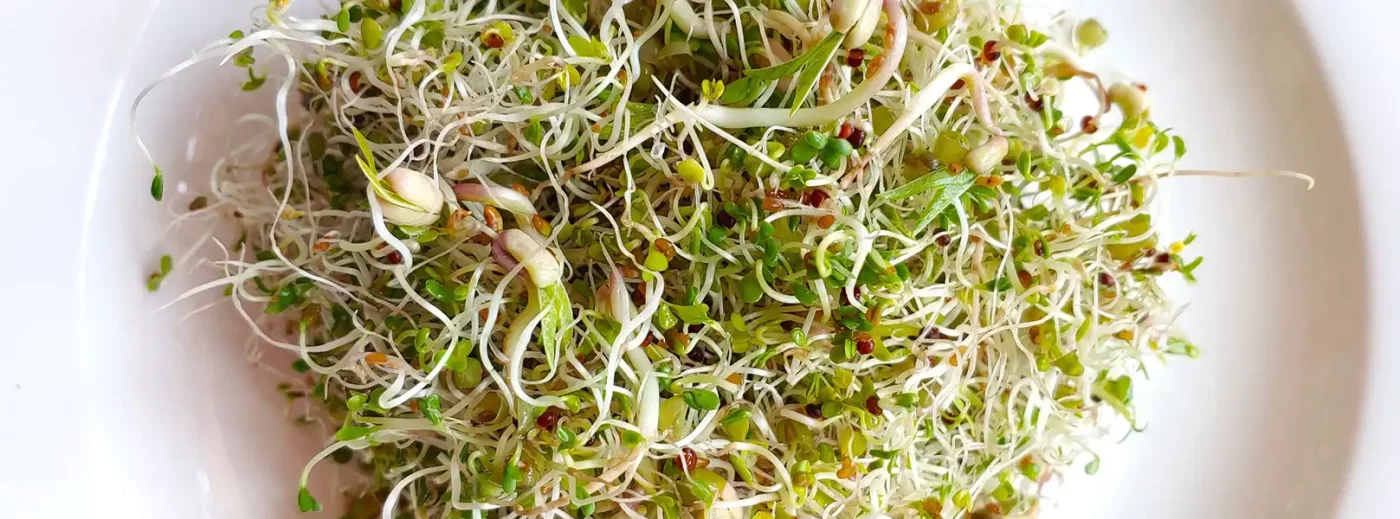Loyalty Program
It is a point-based loyalty program. Members earn points for any purchase at the Sprout House website.
Points can be redeemed for discounts off your purchase. The more points you earn, the higher your discounts.
It’s free to join. Simply create an account (or sign in if you already have one).
Be sure to sign in to receive your points!
Earning points is easy! You can earn points by shopping at the Sprout House website.
You earn 1 point for every $1 you spend on the Sprout House website. You must be signed in to your account to earn points for your purchase.
Your point balance will be accessible on your My Account page.
You can redeem points in your shopping cart.
Every 20 points is equivalent to $1 and you can redeem the points in your cart when checking out.
Please note that you cannot place an order with a $0 total. The products in your cart must be equal or greater than your discount amount.
Shipping and Returns
We apologize, once an order has been placed we are not able to cancel or adjust it. Please be sure to check your order before it is placed to make sure it is completely accurate.
Please contact us at:
(508) 202-7823
customerservice@sprouthouse.com
Once you received your shipping confirmation email, there will be a tracking link you can click on to track your order.
We have a 30 day satisfaction guarantee return policy. 100% refund within 30 days.
Please email customerservice@sprouthouse.com if you are not satisfied with your purchase.
Sprouting
Seeds should be stored at 60 degrees Farenheit or below. A refrigerator or freezer is fine. Stored properly seeds will last for about a year or two. This will also keep the bugs at bay.
For a seed the size of alfalfa or broccoli, the tiny ones, one pound of seed will yield about 6 to 7 pounds of mature sprouts. For a bean, they double in size so that one cup will yield two cups. The same is for sprouting grains. For wheatgrass and barley grass, one tray measuring 10″x20″ will yield about 8 ounces of juice. One pound of the tiny seeds at a rate of 1 tablespoon per day of seed will last for about 60 days.
All measurements are non-scientific and done either in my own kitchen or the kitchen of fellow sprouters.
The following seeds are legumes: Alfalfa, Crimson Clover, Red Clover, Red Lentils, Green Lentils, French Green Lentil, Green Peas, Garbanzo, Soy Beans.
The following seeds are Gluten Free: Fenugreek, Mung Bean, Red Lentil, French Lentil, Green Lentil, Speckled Peas for Shoots, Whole Buckwheat, Buckwheat Groats, Soy Beans, Black Turtle Beans, Popcorn, Garbanzo, Green Pea, Adzuki Bean, Hulled Sunflower, Red Pea, Adzuki Bean for Shoots, Yellow Mustard, Baby Black Sunflower, All Radish, Flax, All Clovers, Cress, Arugula, Pumpkin, Sesame, All Quinoas, Alfalfa, Chia, Broccoli, Onion, Garlic, Dill, Swiss Chard. Red Cabbage, Kale.
Is it mold? Is it mildew? Something else? Not all mold is mold or mildew…sometimes it’s something else. When sprouts are thirsty they put out tiny little microscopic cells called cilia hairs. Cilia hairs are very small cells but we can see them because the roots of the sprouts put out so many. They are tiny enough to get moisture from the atmosphere. This means that the sprouts are thirsty.
If it is mold, then there is a horrible, terrible, disgusting odor associated with it. If it is mold, then it is slimy to the touch and the sliminess does not rinse away. If it is mold, it has a slight grey or blue/grey tint to it. I f it is NOT mold, but are cilia hairs, there is no horrible, terrible, disgusting odor associated with it.
If it is NOT mold, but are cilia hairs, it is not slimy to the touch and it does rinse away only to come back several hours later. If it is NOT mold, it is white in color, like a nice cloud that your sprouts can get moisture from
What to do? Rinse the sprouts for a longer period of time. You are mother nature to them, they can only get their moisture if you provide it for them. So provide them with the water that they need. If you are rinsing your sprouts with the faucet, then sing a nice little song to them for a few minutes. If you are soaking them then go ahead and brush your teeth or comb out your hair. Give them some time with the water. Drain away the excess water when they are done. You may want to rinse an extra time during the day, but really, just give them more time with the water and that should take care of the cilia hair cloud.
Gelatinous seeds form a gel-like sac around the seed in the presence of water. They get gooey, hard to manage and will not sprout using conventional methods such as a jar sprouter or a tray sprouter.
What to do? There are three ways to sprout gelatinous seeds. You can sprout them in soil, you can sprout them using a terra cotta tray sprouter or you can sprout them in a plastic tray sprouter using a non-soil growing medium. These are easily sourced from local nurseries. Sprinkle DRY seeds on to the soil, terra cotta clay sprouter, or non-soil growing medium . Then wet everything, keeping it all moist without puddles. The soil absorbs the gooey stuff and you can sprout as usual making certain the soil is damp and moist but not pooled with water. You do not need a great deal of soil, about ½ will do. Use an organic potting soil. The terra cotta tray sprouter is similar to sprouting in soil as the clay is absorbant. Non-soil growing mediums will also absorb the gooey stuff so that you can sprout as usual. Gelatinous seeds do not do well in jar sprouters.
The sprouting process for these three seeds are all the same. If you are using a tray with soil, you do not need much soil, a small amount will suffice because you are growing to a sprout stage and not a fully mature plant. Use a good potting soil, organic is best.
Soak the seeds in a jar or bowl of water overnight for about 8 to 10 hours. In the morning pour out the water and rinse with fresh water. Put the seeds on the soil. Keep the soil moist, but no puddles. These are ready to eat in about 8 to 10 days. For the sunflower, because they get leggy and spindly, put an inverted tray on top of them. This will make them stronger and not so weak.
Harvest by cutting above the soil line. Sometimes you can get a second harvest. Third harvests do not have the nutritional content as the first two.
If you are using a non-soil growing medium, the directions are similar.

